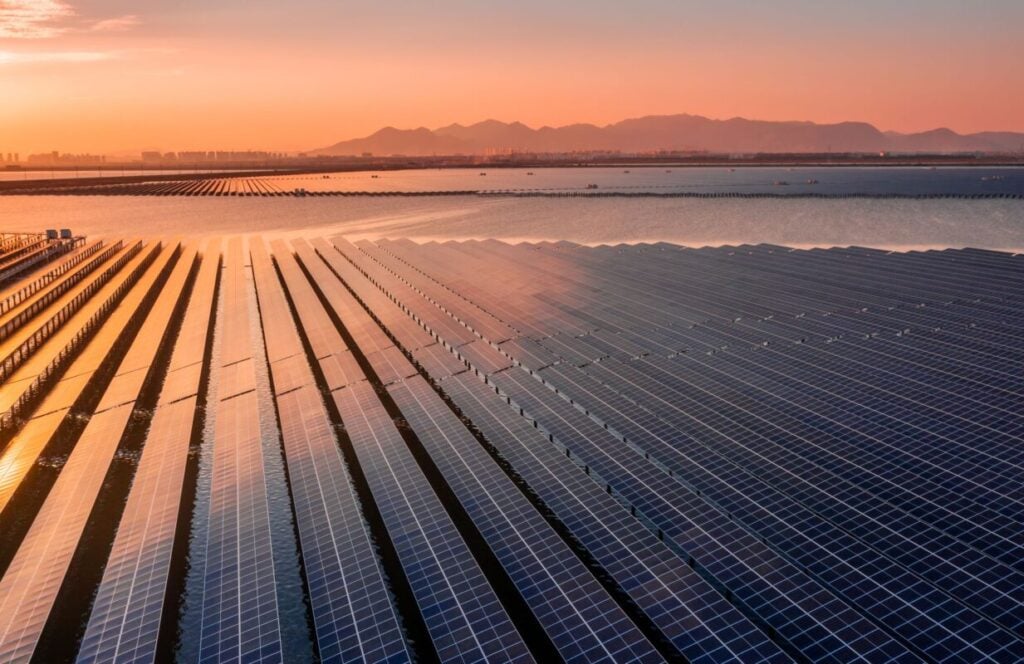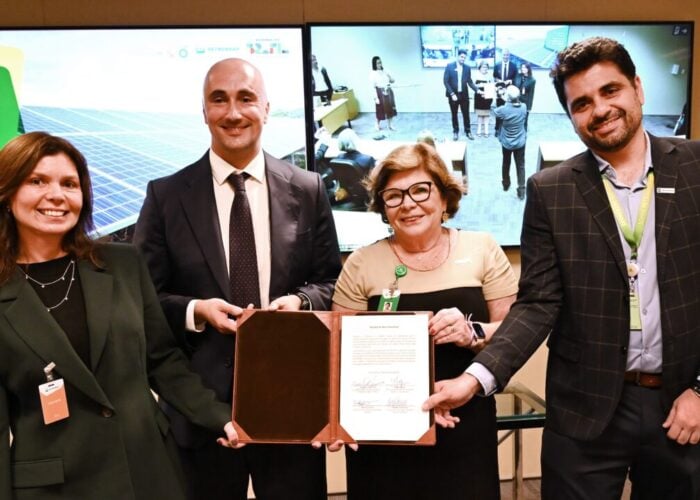
The world added 451.9GW of new solar capacity in 2024, accounting for three-quarters of all new renewable power capacity commissioned last year.
This is the main conclusion to be drawn from the International Renewable Energy Agency’s (IRENA’s) latest figures, which suggest that renewable power now accounts for 46.4% of the world’s total power generation capacity, but that a further 6.72TW will be needed to be brought online by the end of the decade if the world is to meet its clean energy targets.
Try Premium for just $1
- Full premium access for the first month at only $1
- Converts to an annual rate after 30 days unless cancelled
- Cancel anytime during the trial period
Premium Benefits
- Expert industry analysis and interviews
- Digital access to PV Tech Power journal
- Exclusive event discounts
Or get the full Premium subscription right away
Or continue reading this article for free
Indeed, the IRENA report notes that the world will need to expand its operating renewable capacity by 16.6% each year until 2030, if it is to triple its operating renewable capacity.
While IRENA’s solar capacity addition figures are impressive – the world added 32.3% more new capacity in 2024 than 2023, for instance – these figures are also less optimistic than some of the other figures already published. Last year, Ember Climate forecast the world’s 2024 solar capacity additions to hit 593GW, as shown in the graph above, and the International Energy Agency (IEA) estimates that the world added 550GW of new solar capacity in 2024.
“With economic competitiveness and energy security being increasingly a major global concern today, expanding renewable power capacity at speed equals tapping into business opportunities and addressing energy security quickly and sustainably,” said IRENA director-general Francesco La Camera.
“Each year they keep breaking their own expansion records, but we also face the same challenges of great regional disparities and the ticking clock as the 2030 deadline is imminent,” he added.
Asia leads in utility-scale and distributed solar
These “regional disparities” are a key part of the IRENA figures, with the agency reporting that China’s addition of 278GW of new operating capacity more than seven times more capacity than was added in the US, which added the second-most new capacity in the world with 38.2GW. A number of other Asian countries saw significant capacity additions, including India, which added 24.5GW, and South Korea, which added 3.1GW.
In other regions, Brazil and Germany led the South American and European continents, respectively, with 15.2GW and 15.1GW of new capacity additions, respectively, and this trend has only continued the dominance of Asia in the world’s fleet of operating solar assets. As shown in the graph below, Asia, in 2024, added more new capacity than the world combined added in every year, save for 2022 and 2023.
IRENA reports that renewable power made up 92.5% of all new electricity generation capacity additions in 2024, up from 85.8% in 2023.
In 2024, China exported close to eight billion solar cells, and shipped a record 235GW of modules, enough to single-handedly meet the module demand for all new capacity additions in the US in 2024.
Asia also leads the world in off-grid solar capacity additions, with 4.7GW of off-grid capacity in operation at the end of 2024, accounting for over two-thirds of the 6.3GW of off-grid capacity that has been commissioned worldwide. However, the vast majority of this capacity has been brought online not in China, but in India, which had 3.4GW of off-grid capacity in operation at the end of 2024, compared to just 439.8MW in operation in China.
While this is perhaps unsurprising considering the strength of China’s utility-scale sector, the difference between its dominance of utility-scale deployments and relatively small off-grid sector is notable. China’s off-grid capacity, for instance, is less than half of the off-grid capacity in operation in Africa, and just over half the capacity in operation in South America.






